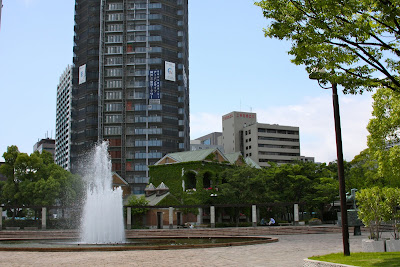If history has set any sort of standard, Japanese men were once considered polygamous, hosting an assortment of wives in various homes around the area in which they made their livelihood. Men would stay at the various homes for a certain period of time, making the "rounds" if you will.
Today, it is still common for many married couples to have separate homes from one another if, for example, the husband works in a different city than he lives. I guess, absence makes the heart stand still in this case.
If her husband isn't home, I know exactly where he is: snack shop. This is a type of bar where the drinks are expensive and come with female companionship. And, I have the fortunate pleasure of witnessing firsthand the wicked underbelly of Akashi nightlife on Snack Shop Street. Coincidentally, this is my street! Yippie!
About 50 ft from my apartment building, I begin to see the scatter of lingering men in black suits on my walk home from work. They stand around, cigarette dangling from their mouths, waiting for the next sloshed crew of businessmen to walk by so that they can solicit to them their ladies in waiting. I am able to observe, night after night, the interactions between the black-suited pimps and bevies of boozed up married men trampling through my street with slurs and slangs that I haven't the faintest clue. I hear them out my window now, singing jolly tunes like drunken sailors with women resembling baby dolls yelling at them from the door steps of the snack shop.
Snack shops could be considered the upscale equivalent of a brothel. And, for pimps, the most straight-laced stint in the world. Or, maybe it's all just the huggermugger Japanese version where the sale of sex isn't laid out on the bar, rather served as a covert cocktail with a side of privy pussy.

















































 In what was once a closed-port country, Japan has certainly served as a nest for foreign residents to make as-close-to culturally authentic homes.
In what was once a closed-port country, Japan has certainly served as a nest for foreign residents to make as-close-to culturally authentic homes. 










